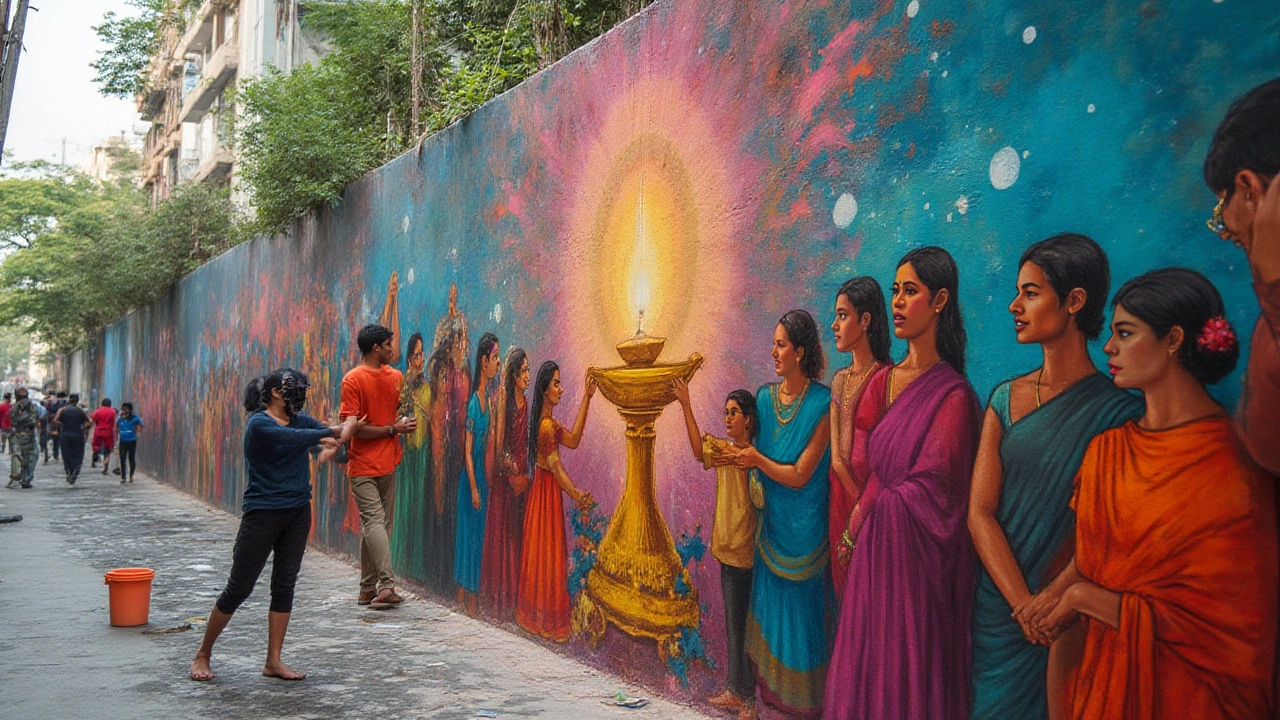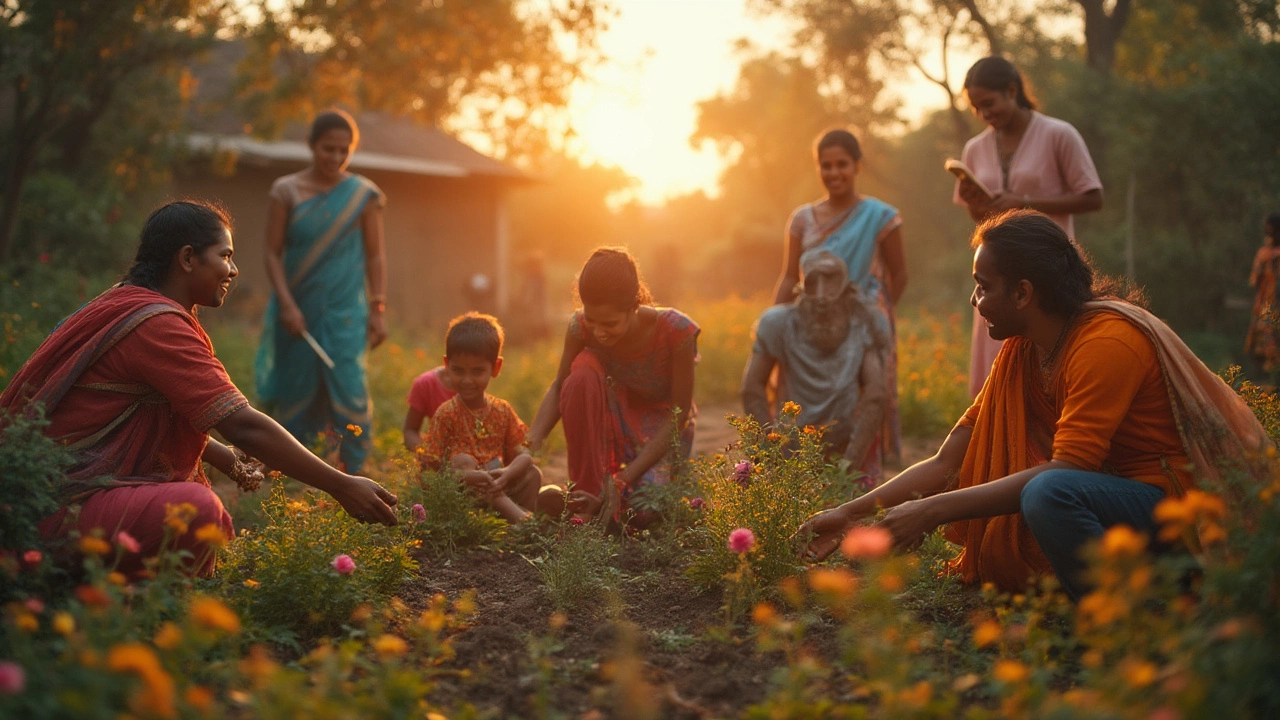If someone told you a single formula could make your local neighborhood more vibrant, kinder, and successful, would you believe them? The secret sauce isn’t fancy tech or heaps of money—it’s something way more basic, and, honestly, anyone can help cook it up. It’s the 5 C’s of community: Connection, Collaboration, Care, Communication, and Commitment. These aren’t abstract buzzwords. They’re practical, almost like building blocks for the type of place where people look out for each other, new ideas thrive, and everyone feels like they belong. Experts have called them the backbone of thriving towns and cities worldwide. Even when high-tech solutions come and go, the 5 C’s stick around, quietly making or breaking the blocks we call home.
Connection: The Glue That Holds Us Together
You can’t even start to talk about a community without talking about connection. It’s more than just waving to neighbors. It’s the feeling that you matter, and someone has your back, even at two in the morning. These bonds—between families, friends, and total strangers—are what keep small towns resilient during disasters and big cities from feeling soulless. Research done by University of Michigan’s Neighborhood Project found that neighborhoods where residents know the names of even just three other families have 47% fewer reports of crime on average. That’s not magic. It’s trust showing up in daily life.
Connection can start with tiny, simple things, like organizing a potluck or helping a neighbor with groceries. Even sharing a smile while walking your dog or a short text check-in during tough times helps. If you want to see these connections grow fast, look no further than volunteering. People who actively volunteer are statistically twice as likely to feel they belong compared to people who don’t. And let’s not forget online spaces—digital platforms can be the bridge for people who struggle to attend local events or have mobility challenges. Apps like Nextdoor or local Facebook groups can spark introductions and offer support, especially during rough patches, like a heatwave or a neighborhood power outage.
So, how do you deepen your sense of connection? Start with a simple routine: talk to someone new every week. Attend just one community meeting or club. You might be surprised: the folks you meet could turn into the people who champion your projects, support you during family emergencies, or even spark totally new ideas for making everyone’s life better.
Collaboration: Working Together Is the Game Changer
The best projects and causes in any community come to life when people join forces. Collaboration means rolling up your sleeves alongside neighbors, local businesses, nonprofits, and sometimes even city councils. Each partner brings different experiences, ideas, and resources to the table, which almost always makes solutions stronger—and more creative. For instance, in Portland, Oregon, a group called City Repair Project turned unused land into community gathering spaces by bringing together architects, artists, and local families. The result? Safer streets, more colorful art, and new friendships.
Nothing kills collaboration faster than ego or turf wars. Sharing credit and being open to compromise are the real superpowers here. You’ll find out quickly that every person matters. Take food pantries, for example—many survive not just on donations, but on the teamwork of retired teachers, high school students, and even local restaurants who provide leftover food. If even one piece of that puzzle drops out, the whole process can get shaky.
People often underestimate how much faster things get done when you ditch competition and focus on working together. The Trust Barometer 2024 from Edelman reports that 77% of people worldwide trust 'my employer' more than anyone else, but when it comes to solving big social issues, 70% believe only community cooperation makes real progress. Bottom line: you want to see a real impact? Put a mix of people with different skills in the same room, give them a challenge, and watch what happens.
Looking to start something in your own neighborhood? Bring snacks—a bowl of chips is a powerful negotiation tool. Invite people from a variety of backgrounds, and don’t dismiss the quiet person in the corner. Some of the best ideas come from unexpected places.

Care: The Heartbeat of Community Spirit
Now, let’s be honest. A lot of folks skip the “care” part, thinking charity or social services is someone else’s job. But real communities share responsibility, not just resources. If you want the streets to feel safe, the parks to stay clean, and people to be less lonely, it takes everyone showing genuine concern for one another's well-being. The American Time Use Survey shows that people who perform even one act of kindness per day are 25% more likely to report higher overall happiness levels.
Care isn’t only about grand gestures. Sometimes it means noticing when your usually energetic neighbor suddenly seems withdrawn and quietly asking if they’re okay. It could be as simple as shoveling snow for the person next door or sharing a meal with someone new to the block. Care also means standing up if you see something unfair or lending a listening ear when a local business owner seems stressed. Too often, these tiny acts go unseen, but over time, they snowball into a culture of compassion where people want to stick around, raise families, and put down roots.
Many schools now teach 'social-emotional learning' because studies show that caring classmates make for better academic results and much lower dropout rates. Think about what happens when communities ignore care: rising tensions, more isolation, and a general lack of respect. It’s a spiral nobody wants. So, try introducing a 'random acts of kindness' challenge at your school, workplace, or social club. Put out a jar where people can drop gratitude notes or organize buddy systems for people living alone. You might just start a ripple effect.
| Community Practice | Reported Increase in Belonging (%) | Reduction in Loneliness (%) |
|---|---|---|
| Weekly volunteer meetups | 65 | 32 |
| Neighborhood shared gardens | 48 | 22 |
| Regular skill-sharing events | 52 | 26 |
Those are not just numbers—they’re proof that when you plug care into the mix, everyone benefits.
Communication and Commitment: The Fuel and the Engine
If you’re wondering how to keep all of this going, turn to communication and commitment. Communication is the fuel. Without it, you get mixed signals, missed opportunities, and sometimes, expensive mistakes. Good communication breaks down misunderstandings and lets people share concerns before they become big headaches. A recent study from Stanford’s social research lab shows that groups who practiced active listening finished group tasks 23% faster with 19% fewer conflicts.
Think about how you respond when a neighbor posts in the group chat about suspicious activity or when a fundraising event includes lots of reminders and clear instructions. Information needs to flow both ways—top-down (from leaders to residents), bottom-up (from residents to leaders), and sideways (neighbor to neighbor). And don’t just rely on emails or print flyers. Some people prefer face-to-face chats; others love social media or even postcards.
Commitment is what keeps the engine running long after the first burst of excitement fades. Ever sign up for a club or social cause, only to stop showing up after a month? That’s what happens when commitment lags. Real impact comes from people saying 'I’m in this for the long haul.' In Japan, local firefighters are mostly volunteers, and they stick around for decades, serving the same town, because there’s a deep-rooted commitment to their community’s safety and well-being.
So how do you build and keep that sense of commitment? Start by making participation personal. Recognize efforts—even small ones. Celebrate milestones, laugh together often, and always, always share the credit. Create fun traditions, whether it’s an annual block party or a monthly clean-up. Over time, these rituals give people a reason to stick around and create new memories, making the commitment feel natural instead of forced.
A favorite quote from leadership consultant Peter Block sums it up perfectly:
“Community is built by small steps, repeated over and over by ordinary people who simply care enough to show up.”
In the end, the 5 C’s aren’t complicated, but they are powerful. If you want to see real-life results—lower crime, less loneliness, brighter neighborhoods—start where you are. Chat to your neighbor, invite collaboration, show some care, communicate clearly, and lock in your commitment. Bit by bit, these old-fashioned building blocks can shape a future that feels welcoming and full of hope for everyone around you.
